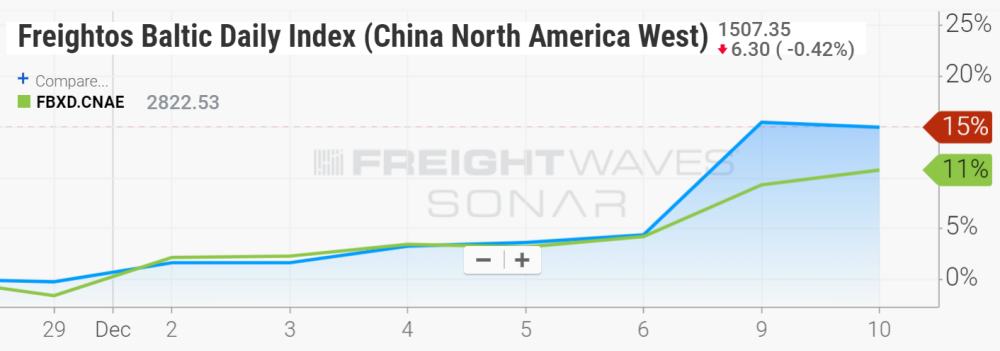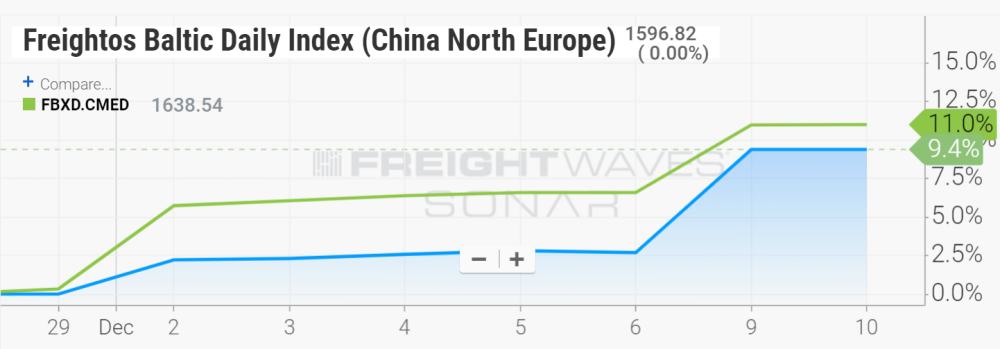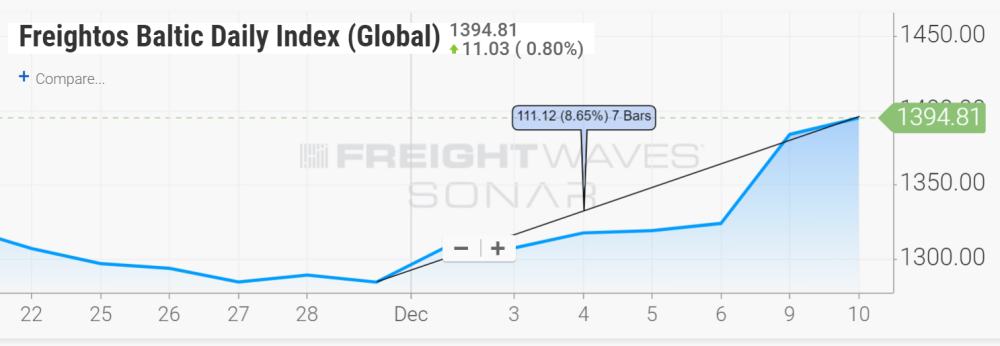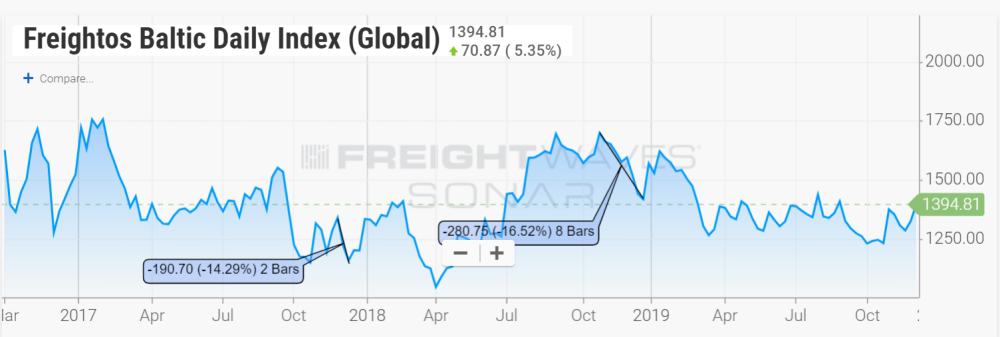This is a crucial time for container lines. Their future financial health relies upon whether or not they can pass along new fuel costs to cargo shippers.
Only three weeks remain until the IMO 2020 regulation takes effect. On Jan. 1, all vessels without exhaust-gas scrubbers will have to switch from cheaper 3.5% sulfur fuel to more expensive 0.1-0.5% sulfur fuel.
In the case of larger container ships doing long-haul routes, that transition has almost certainly already occurred (to prevent a ship from still carrying 3.5% sulfur fuel in mid-voyage on the deadline day).
Container lines implemented their IMO 2020 surcharges on Dec. 1. The Freightos Baltic Daily Index tracks the price to ship 40-foot-equivalent (FEU) boxes along various routes. If higher fuel costs are being passed along, the index levels should have bumped up, not just piecemeal, but across all major lanes.
The good news for container lines is that the fuel surcharges appear to be working. The caveat is that it’s still very early days.
According to Eytan Buchman, chief marketing officer of Freightos, “Prices are rebounding, with several lanes surpassing November highs. Chief among the supply drivers is the start of low-sulfur fuel oil or scrubber installation costs being passed on to shippers ahead of the IMO fuel-regulation rollout.”
The two largest container trades are Asia-U.S. and Asia-Europe. In the transpacific market, pricing on the China-to-North American West Coast route (SONAR: FBXD.CNAW) is up 15% between Nov. 29 and Dec. 10. Pricing on the China-to-East Coast route via the Panama Canal (SONAR: FBXD.CNAE) is up 11% in the same period.

The same pattern holds true in the Asia-Europe market. In the trade lane from China to North Europe (SONAR: FBXD.CNER), container pricing rose 9.4% between Nov. 29 and Dec. 10. In the China-to-Mediterranean lane (SONAR.FBXD.CMED), pricing increased 11%.

Looking at the global index, which averages all of the estimated pricing changes along the various lanes, the rates are up by around $110 per FEU during the period, equating to an increase of 8.6%.

Of course, factors besides the fuel surcharges could be at play, but if it’s a normal seasonal pattern, it would have shown up in pricing during the previous years. There’s no evidence of a seasonal factor behind the early December rise. Last year, pricing measured by the global index fell sharply between late October and mid-December. In 2017, rates fell between late November and mid-December. More FreightWaves/American Shipper articles by Greg Miller

Editor’s note: Freightos has a business agreement with FreightWaves that includes editorial coverage.







